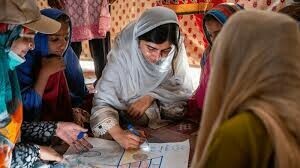PUNE: When Yohan Poonawalla took delivery of the first Rolls-Royce Phantom sold in India last year, the car was everything that he was promised. Inside the 2.5-tonne, 20ft vehicle was a hand-crafted walnut dashboard featuring a humidor. The tinted windows had electronically controlled curtains. Open the doors and out popped a silver-handled umbrella.
But the £500,000 vehicle’s first miles in the country were traumatic for Mr Poonawalla. Picking it up from Mumbai, the 34-year-old scion of a wealthy industrial family had to drive the car to his home in Pune, 180km away. Despite its immense power - the Phantom zooms from 0 to 62mph in under six seconds - the car slowly picked its way through the maze of Mumbai’s decrepit backstreets and gridlocked intersections.
“Taking it out [of Mumbai] was not easy. You had cows; people on the streets. There was no other way to get the car home. All I could think about was just watch out for the car,” Mr Poonawalla recalls. “It was the longest hour I have ever spent behind the wheel.”
It was not until he made it out of the city that Mr Poonawalla finally found a road decent enough to drive his Rolls on. “The expressway is as good as any road in Europe. It was my first chance to really see how the car handles and travels.”
What Mr Poonawalla experienced are the first fruits of India’s roads revolution, which has helped propel the country’s economic annual growth past 8 per cent. The six lanes running from Mumbai to Pune are part of the 3,650-mile Golden Quadrilateral highway, which is the largest infrastructure project undertaken since the country became independent in 1947. The expressways form a diamond linking Delhi with the country’s three other largest cities: Mumbai, Chennai and Calcutta. On schedule to be completed this year and within its £4bn budget, the Golden Quadrilateral marks the beginning of more than £35bn of road projects.
For anyone accustomed to India and the haphazard way things happen, the country’s new motorways are nothing short of a miracle. “We had to link the country up. This was a mission of the greatest importance for the economy,” said BC Khanduri, who was minister of roads from 2000 to 2004. A retired major general in the Indian army engineering corps, he cracked down on corruption and delay.
“Look we gave deadlines and made sure people met them. There were penalties for poor performance and bonuses for those who delivered on time,” said Mr Khanduri. “My idea was to say good infrastructure could be built in India too.”
Many point out that the initiative to create a high-speed road network was sorely needed as the nation’s antiquated transport links were cutting deep into profits and slowing economic growth.
The comparison with China is a poor one. India’s northern neighbour focused early on building up its infrastructure, especially its network of arterial routes. During the 1990s Beijing spent £18bn a year on expanding its expressways — 10 times the amount Delhi managed. The result is that highways, which move four-fifths of all goods transported in India, account for only about 2 per cent of the country’s roads.
Ports, too, are a problem. On average it takes 85 hours to unload and reload a ship at India’s major ports, 10 times longer than in east Asia. “Historically speaking, roads in India have been starved of funds and, even worse, their maintenance has been sorely neglected,” says NK Singh, a former government adviser.
But Mr Singh says there has been a dramatic shift in thinking since 2000, with spending on infrastructure this year rising by 24 per cent. The arrival of smoother, wider roads in India has had an immediate, visible effect: the start of the Indian public’s love affair with the motor car. The potential has barely been tapped, say analysts, who point out that though 40 million Indians can afford a car there are only 7.5m cars on the country’s roads.
Motor manufacturers have begun to take notice. Sales of Ford cars in the country are rising at more than 30 per cent a year, leading the company’s chief executive, William Clay Ford, to remark that India was now a “top priority”. Local carmakers have also moved to ramp up production.
The Society of Indian Automobile Manufacturers recently released figures showing India’s vehicle production jumped 13 per cent last year. By 2009 the country will account for 8% of global motor industry growth.
While China’s rise is scaring India into upgrading its roads network, it is Japan’s companies that provide an inspiration for India’s nascent car industry. Maruti began life as an Indian government firm, but is now majority owned by Japan’s Suzuki. It is also India’s biggest motor manufacturer. Every morning at just before 7am in the Maruti car plant in Gurgaon, an hour’s drive out of Delhi, hundreds of workers wearing identical green shirts and trousers line up for exercises and sing the company song.
Maruti has adopted specific practices — individual production targets, company slogans and uniform — to emulate the Japanese commitment to quality. The Indian managers take trips to Suzuki’s headquarters and pepper their conversation with Japanese management speak.
The Gurgaon plant now produces more than 500,000 cars a year and another £750m factory is being built in nearby Manesar. Suzuki’s Indian sales will soon exceed Japan’s. The abundance of cheap labour in India means Gurgaon’s assembly lines are not fully “robotised”. “Whereas in Japan we would look at 95 per cent robotisation, in India we manage with 70 to 75%. Our wage base is cheaper,” said Shankar Sanyal, a Maruti manager.
However, this is changing. Rolling off Gurgaon’s assembly line is a new car, a hatchback called the Swift, which is built in the same way as in Japan. In a marked shift, Indian engineers did much of the research and development. The Swift highlights another trend: the emergence of India as a small car hub. With government handing out tax incentives, India is now the third largest maker of small cars in the world. Sales of hatchbacks in India topped 650,000 this year.
The increased activity has given rise to world-class auto-components firms, kickstarting a new wave of outsourcing that had Kamal Nath, India’s trade minister, recently pointing out that while General Motors was losing workers in Detroit it was recruiting in India. The auto-parts industry, too, has sought to emulate Japanese competitors. Rane Group, based in Chennai, has sales of £165m and is growing at more than 10% a year with exports rising at a faster pace. Yet only five years ago the company could not take on foreign competitors, scaring away customers with shoddy brakes and valves.
“Our natural advantage is in wage costs. In the past the gap was the quality of our products. So we hired Japanese consultants and got them to show us where we went wrong,” says Babu Laxman, the company chairman.
These are the first signs that the country may be experiencing a boom in manufacturing to rival the Chinese. “We do not see Chinese competition as our rivals,” says Mr Laxman. “It’s the Japanese we want to match and beat.”—Dawn/The Guardian News Service










































Dear visitor, the comments section is undergoing an overhaul and will return soon.